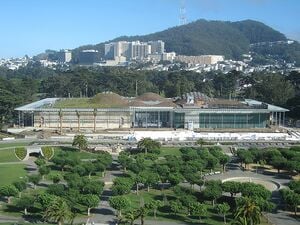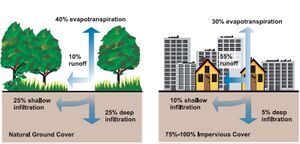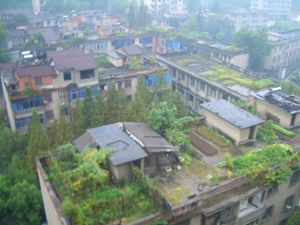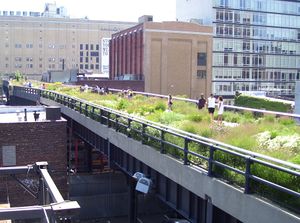
Low-Impact Development(LID) is an integrated method that uses a system of practices distributed across a development site designed to help control stormwater runoff, and eliminating the need for extensive storm sewer systems.Some common practices include the use of pervious surfaces, bioswales, open spaces, and rain gardens. Studies have demonstrated the effectiveness of LID techniques and its controllment of runoff from small and moderate rainfall events, and for limiting pollution exportation from residential developments (Dietz and Clausen, 2008)
Main Goals of LID principles and practices include runoff reduction(peak and volume), infiltration increase, groundwater recharge, stream protection, and water quality enhancement through pollutant removal mechanics such as filtration, chemical absorption, and biological processes(Hunt et al. 2010)
Principles have been successfully utilized in urban environments for promoting environmental sensitive planning and design, and effective management of water resources (Coffman, 2002).
History[edit | edit source]

Low Impact Development (LID) Technology was first introduced in the mid 1980's by the Associative Director of Prince George's Country, in Maryland by Larry Coffman who was in charge of the Department of Environmental Resource's. His job was to manage the Country's National Pollutant Discharge Elimination System (NPDES) numerous programs ranging from stormwater, flood control, stormwater capital improvements, water and sewer planning and public outreach programs. Coffman's main goal behind coming up with LID Technology was to help Prince George's Country deal runoffs and protecting the environment. By trying to imitate and keep the natural hydrologic characteristics of the site or region that is being developed. Since LID Technology was first introduced in Maryland State in the United State it has spread out through the world and more countries have started to adopt this new technology.
Impact of Urbanization on Water Management[edit | edit source]
Due to the increase of the human population and the need for more homes and communities to accommodate the rising population number world wide. Has lowered the the amount of available water resources to everyone. The natural vegetation that was once seen all over has been replaced with pavement for roads, buildings, and all the other structures that are required to accommodate the new population number in the number of increasing Cities all over. The results of these urbanizations are the drastic change in the water and heat cycle. This had lead to multiple problems for example water scarcity, urban floods, groundwater decrease, and heat island phenomena. The result of the increase of energy consumptions to cool down is due to the fact of the temperature increase in urban areas. It has actually been reported that 2-3% of the total energy in the world is being used to secure and supply water resources. Not just that but it has also been predicted that there has been a strong impact of global climate change on the availability and variability of water resources. In the end the climate change will results in higher temperatures, more rain, extreme weather, and rising sea-levels, which will have serious impact and arise even more problems for the human population.
Benefits[edit | edit source]
LID Technology has multiple benefits that will help the environment continue it's natural cycle. Even with the disturbance of humans and their construction.
Water Quality LID Technology helps protect lakes and streams water quality from large amounts of runoff pollution. By contributing to the recharge of of groundwater through infiltration.
Meets Clean Water Act Requirements LID Technology also meets the Clean Water Act Requirements that were set by NPDES. Such as the reduction of pollution levels and volumes of runoff entering a water body thanks to source control.
Flood Control Helps maintain and lower the frequency and severity of floods plus also helps reduce peaks flow volume and velocity. Slow The Flow if you slowing the water with LID Technology the effectiveness of the pervious surfaces or materials can help reduce erosion and the loading of sediments.
Habitat Protection LID Technology also helps the environment continue to prosper like it has for s many years. By helping preserve streams and riparian habitats, regional trees and vegetation. Also helps reduce the amount of erosion from sediment loading into lakes and streams.
Community Value By having a cleaner environment in helps increase the value of the land. It also helps rise the public and private collaborative partnerships. It also helps with money expenses it decreases the cost of sewage and water importation cost.
Asethic Value LID Technology techniques both are helpful for the environment to continue on prospering and continuing its natural hydrological flow. But also leaves beautiful scenery for everyone who passes by to see. In some areas it actually enhances its asethic value/
Evaluations[edit | edit source]
Evaluations of LID practices have been recorded on field studies on biorentention/ rain garden, permeable pavement, green roofs, and swale systems.

Bioretention/ rain gardens are suitable for residential and commercial settings, but can also be used for agricultural water quality improvement. They capture runoff, infiltrate, promote evapotranspiration and reduce peak flow.
Permeable pavements are designed to store surface runoff, which allows slow infiltration into the subsoil (USEPA 1999b). Examples of permeable pavements include block pavers, and plastic grid systems.
Green roof, a building rooftop covered with vegetation is used to control runoff volume, improve air and water quality and promote conservation of energy. Also known as garden roofs, intensive green roofs may have grasses, flowers, shrubs, trees, root barriers, and drainage and irrigation systems, to hold and route rain water, thus slowing the velocity of direct runoff.
Swale systems are shallow open channels with gentle side slopes, filled with erosion and flood resistant vegetation, designed to convey, control, and improve stormwater through infiltration and filtration (USEPA 1999).
LID Technology Branching Out[edit | edit source]
Over the years LID Technology has spread out through further away from where it had originated in Prince George's Country, Maryland in the United States and crossed the ocean to other continents such as the Europe as well.
States In the U.S. That Have Accepted LID Technology
- California
- Idaho

- Marryland
- Massachusetts
- New York
- North Carolina
- Pennsylvania
- Rhode Island
- Texas
- Virginia
- Washington
Countries In Europe That Have Accepted LID Technology
- France
- Germany
- Iceland
- Sweden
- United Kingdom
References[edit | edit source]
- Urban Design Tools Low Impact Devlopment: Introduction to LID
- National Pollutant Discharge Elimination System (NPDES)
- Comparison of Maintenance Cost, Labor Demands, and System Performance for LID and Conventional Stormwater Management
- Effectiveness of Low Impact Development Practices: Literature Review and Suggestions for Future Research [1]
- Section B. Clean Water Act Requirements
- Low Impact Development A Guidebook for North Carolina
Low-Impact Development Design Strategies An Integrated Design Approach [[2]